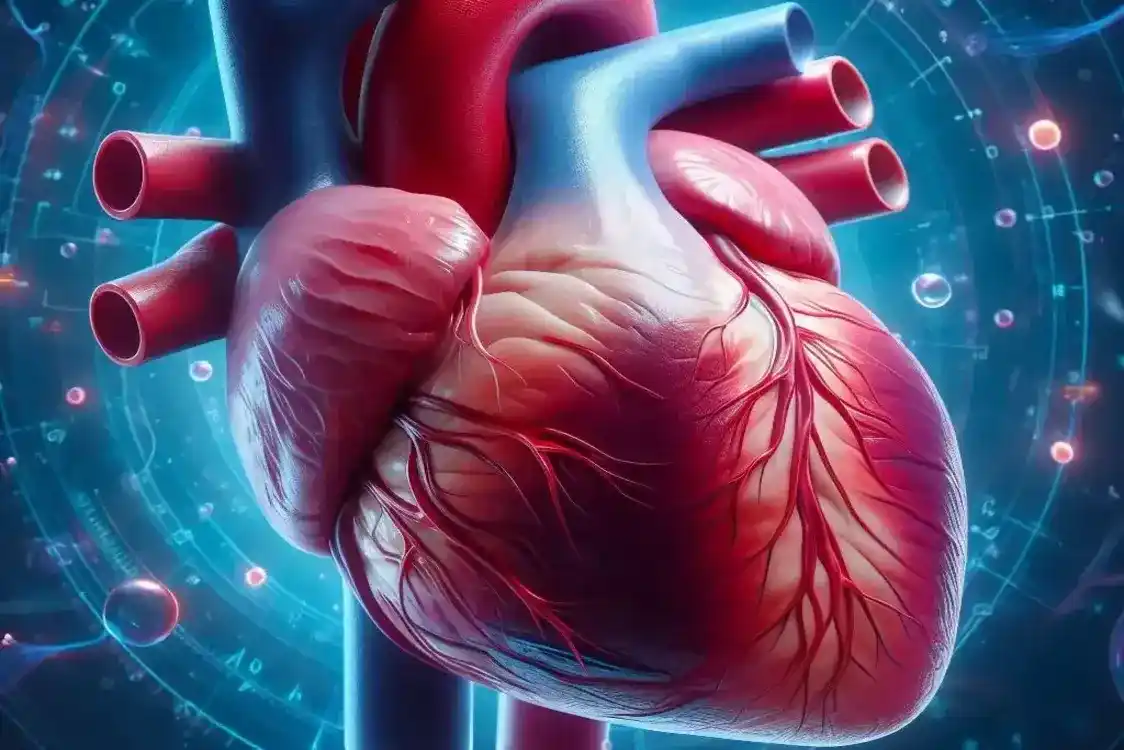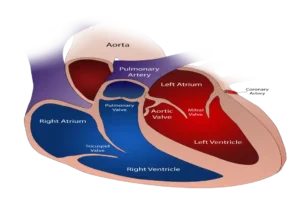Mitral stenosis is a narrowing of the mitral valve opening that hinders blood flow from the left atrium to the left ventricle during diastole. This condition increases pressure in the left atrium, which is transmitted to the pulmonary veins and causes pulmonary hypertension, the main cause of symptoms.
Causes of mitral stenosis
- The most common cause is chronic rheumatic disease. This disease is usually preceded by rheumatic fever or streptococcal pharyngeal infection during childhood or youth, and develops slowly as the mitral valve leaflets thicken and fuse. The thickening and fusion of valve structures, along with progressive calcification, reduce mobility and impair flow through the mitral valve.
- Other less frequent causes include congenital mitral stenosis and rheumatologic diseases.
- Masses in the atrium, such as thrombi, myxomas, or the membrane of the cor triatriatum, can also mimic this condition.
- Mitral annular calcification may contribute to the problem, especially when extensive.
Symptoms of mitral stenosis
In chronic rheumatic disease, symptoms typically appear several decades after the episode of acute rheumatic fever, typically after the age of 40. The main symptoms are:
- Exertional dyspnea (difficulty breathing with physical activity), orthopnea (difficulty breathing when lying down), and paroxysmal nocturnal dyspnea.
- Acute pulmonary edema (fluid accumulation in the lungs) in severe cases.
- Right-sided heart failure and arrhythmias (especially atrial fibrillation).
- Palpitations, weakness, dizziness, angina, and even systemic embolism (anywhere such as the brain, kidney, limbs, etc.).
- Hemoptysis (coughing up blood) occasionally or blood-streaked sputum.
- Dysphonia (hoarseness or change in tone or pitch of the voice) due to compression of the recurrent laryngeal nerve.
- “Mitral facies” is observed in some cases and is characterized by so-called “malar flush,” which are reddish-bluish patches on the cheeks.
- In advanced stages, signs of right-sided heart failure may appear (especially enlarged liver, distended abdomen, and swelling of the lower limbs due to fluid buildup).
Diagnosis of mitral stenosis
The diagnosis is based on symptoms and findings during cardiac auscultation (characteristic heart sounds and murmur). It is confirmed through:
- Electrocardiogram (left atrial enlargement, atrial fibrillation).
- Chest X-ray (left atrial enlargement, signs of pulmonary edema).
- Doppler echocardiogram, which allows assessment of the mitral area (severe if ≤ 1 cm²) and pulmonary pressure.
- Transesophageal echocardiogram to visualize thrombi or intracardiac masses.
- Cardiac catheterization if other heart diseases or coronary artery disease are suspected.
Treatment
Initial treatment is medical, aimed at symptom control. Oral anticoagulation is indicated in the presence of atrial fibrillation, heart failure, or previous embolism.
Surgical treatment is indicated if there are significant symptoms or sustained pulmonary hypertension. The options are:
- Closed mitral commissurotomy: the valve is opened by applying pressure on the heart surface, without stopping the heartbeat; it is rarely used today.
- Open mitral commissurotomy: the fused mitral leaflets are separated from inside the heart, requiring the chest to be opened, the heart stopped, and cardiopulmonary bypass used.
- Valve replacement: indicated in advanced cases or re-stenosis (recurrence of stenosis). The choice between a biological or mechanical prosthesis depends on the patient’s age and comorbidities.
Percutaneous valvuloplasty is an alternative in selected cases. It involves inserting a balloon catheter and performing commissurotomy by inflating one or two balloons placed in the mitral opening. It usually has low complication and mortality rates, but surgery may be required later due to re-stenosis.
In patients with atrial fibrillation undergoing surgery, the Cox maze procedure can be performed to restore sinus rhythm. It consists of making maze-like incisions in the atria to block the chaotic electrical impulses of atrial fibrillation.
Mitral stenosis is a serious condition, but with early diagnosis and appropriate treatment, many patients can maintain a good quality of life.



